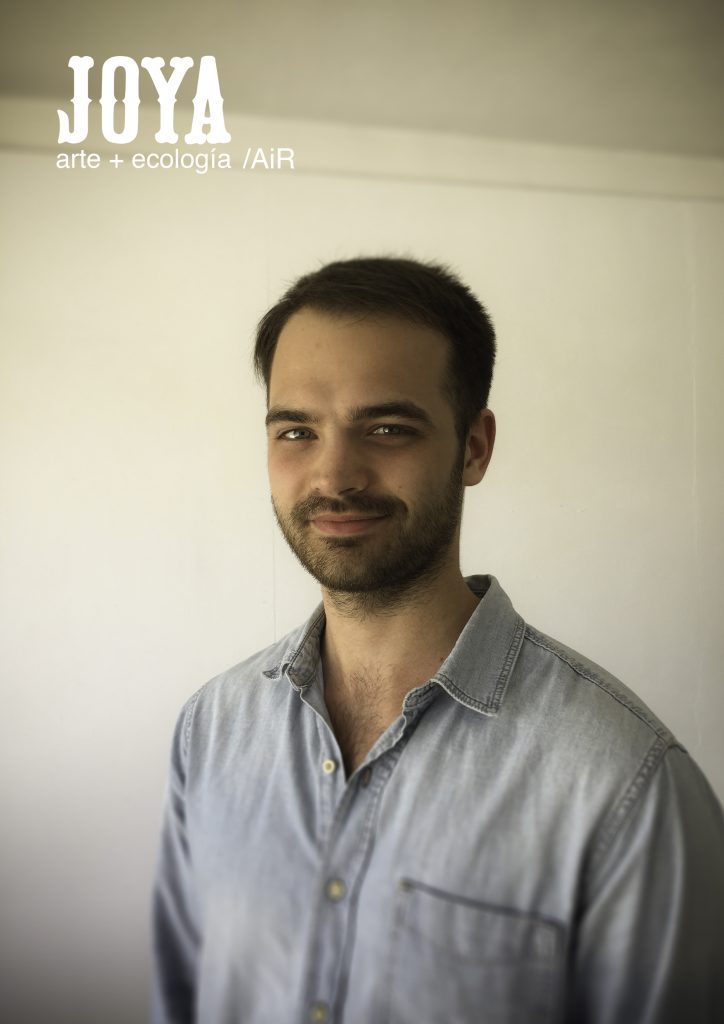‘My practice is often cited as largely structure-focused – its aim is to encourage a re-evaluation of viewer perceptual and spatial engagement with screens. The intrinsic relationship between the structure of the screen, and that which is shown upon it has proved to be particularly challenging throughout the development of my practice. The depiction of landscape within my work has often raised questions and remarks as to its validity within the context of a widely structure-focused practice.
Joya: arte + ecología, with its ethos centred on sustainability, became the perfect platform to address the ongoing issue of landscape depiction on screens within my own practice. Initial intentions of my residency included explorations of phenomenology and memory in relation to landscape when disseminated on screen based technology.
And yet, as my week long residency progressed, the urgency of the environmental issues at the core of Joyas philosophy introduced new avenues for work making, as well as resurfacing long-dormant concepts in my practice.
Fresh questions arose as to the role of the screen as a tool of dissemination for these sustainable values. That which is depicted on the screen is a mediated depiction of reality – often misconstrued and exploited, screen based imagery can become commodified by various broadcasting platforms. Furthermore, with viewers increasingly becoming distanced and desensitised from content presented on screens, how can the screen be used to depict the delicate reality of ‘abstract concepts such as climate change’?
Questions such as these reaffirmed my decision to spend the week at Joya – problematizing and challenging the core principles of my practice allowed for further investigation and experimentation within my work. Introducing my research concerns alongside those of Joya: arte + ecología pushed my understanding of my own works aims, and its possible outcomes.
The aim upon my arrival was to submerge myself and my practice in an environment with an understanding and appreciation of landscape and our relationship to it. As a practitioner that embraces speculative and experimental work making, this surrender to the trails, hills, fluvial systems, flora and fauna proved a fertile environment for observational video making and subsequent editing.
Works depicting a gradual slip from identifiable landscape to a state of abstraction were just one outcome. This metaphor, though simple in concept, speaks to the ongoing environmental concerns at Joya: arte + ecología.
It is a shame that my visit was short, as the enormity of the surrounding landscape would no doubt have raised further thoughts and inspiration had I stayed longer. The hugely accommodating Simon and Donna supported my residency at every point, offering critique and space for reflection in equal measure.
The work that I have put together over the week will provide me with a trajectory and points for further consideration for months to come’.
James Quinn is a Phd student studying at Norwich University of the Arts and University of the Arts London. http://www.nua.ac.uk/ma-degree-show-2015-catalogue/james-quinn/






